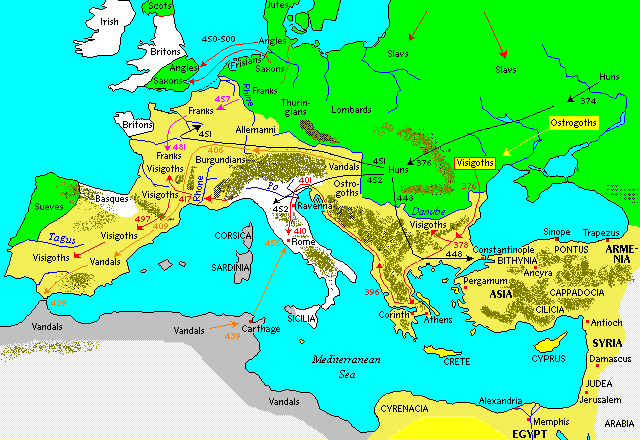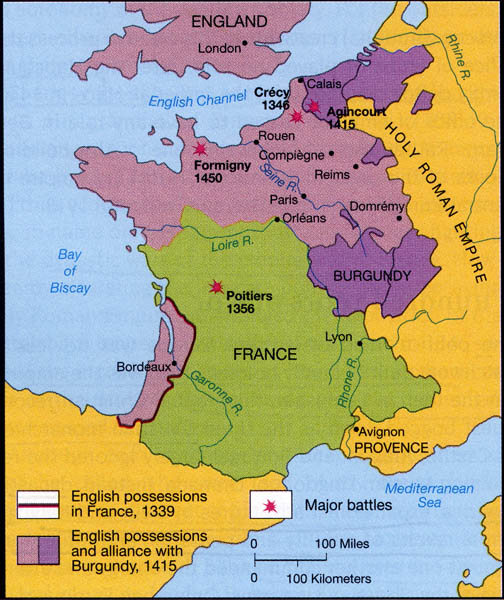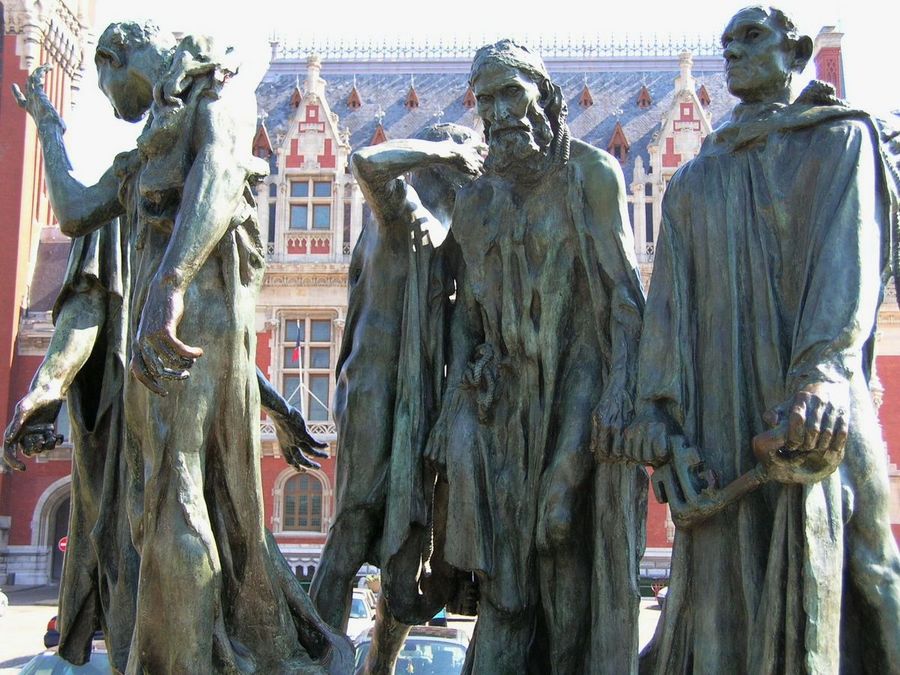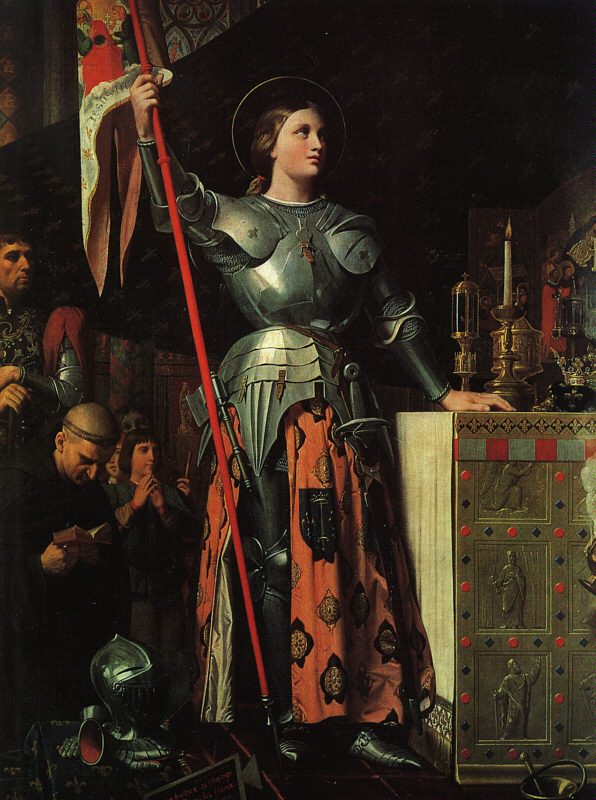* Starts with the end of the Western Roman Empire (476)

http://www.newgenevacenter.org/our-story/15_medieval_church.htm
The Western Roman Empire ended officially with the abdication of Romulus Augustus under pressure of the Germanic chieftain Odoacer on September 4, 476.
* Ends with the end of the Hundred Years' War (1453)

http://www.uncp.edu/home/rwb/lecture_mid_civ.htm
The immediate causes of the Hundred Years War (1337-1453) were the dissatisfaction of Edward III of England with the nonfulfillment by Philip VI of France of his pledges to restore a part of Guienne taken by Charles IV; the English attempts to control Flanders, an important market for English wool and a source of cloth; and Philip's support of Scotland against England.
The Hundred Years War inflicted untold misery on France. Farmlands were laid waste, the population was decimated by war, famine, and the Black Death, and marauders terrorized the countryside. Civil wars and local wars increased the destruction and the social disintegration. Yet the successor of Charles VII, Louis XI, benefited from these evils. The virtual destruction of the feudal nobility enabled him to unite France more solidly under the royal authority and to promote and ally with the middle class. From the ruins of the war an entirely new France emerged. For England, the results of the war were equally decisive; it ceased to be a continental power and increasingly sought expansion as a naval power.
http://www.infoplease.com/ce6/history/A0824538.html
After the Battle of Crˆmcy (1346), Edward III of England (1312-1388) besieged the city of Calais, which surrendered to him after eleven months, giving the English a base in northern France.

http://shyamramtravels.blogspot.com/2005/09/long-weekend-and-short-trip-in-europe.html
In 1884 Auguste Rodin (1840-1917) submitted a maquette for a competition in Calais, France to erect a monument in honor of a local hero, Eustache de Saint-Pierre. This hero was part of a dramatic event that occured in Calais in 1347, during the Hundred Years War. Six leading citizens of Calais volunteered themselves as hostages to the English king Edward III in exchange for his lifting an eleven-month siege on their city. Eustache de Saint-Pierre was the first of six brave citizens to surrender. Rodin was greatly moved by the power of the story and offered to depict all six men for a modest sum. He began by studying the history surrounding the event as well as other artistic depictions of the burghers.
Rodin's originality won him the commission for the monument and by 1885 he was completing a second maquette for the final approval of the Municipal Council. Two years before its completion, the commissioners of the monument disbanded. Rodin, however, finished The Burghers of Calais in 1888 and exhibited it to the public in 1889 at a joint exhibition in Paris with Impressionist painter Claude Monet. After the committee reconvened in 1893, Rodin began contemplating the placement of the monument. He wanted to exhibit the figures on the same level as the viewers, so that they could get a feeling of the heroes walking towards the king's camp. However, after much debate and against Rodin's wishes, in 1895 the city council arranged the figures on a single elevated base installed in front of the public garden. It was not until 1924 that the monument was moved to the Place d' Arms and displayed without a pedestal.
http://www.cantorfoundation.org/Rodin/Gallery/rvg31.html

Joan of Arc at the coronation of Charles VII, by Jean Auguste Dominique Ingres (1854)
http://en.wikipedia.org/wiki/Joan_of_Arc
In 1429, at the siege of Orleans the French finally gained the upperhand. Joan of Arc (1412-1431) led a relief force which successfully defeated the English. For the next 25 years, the French defeated the English at many engagements and the English retreated from France except for Calais.